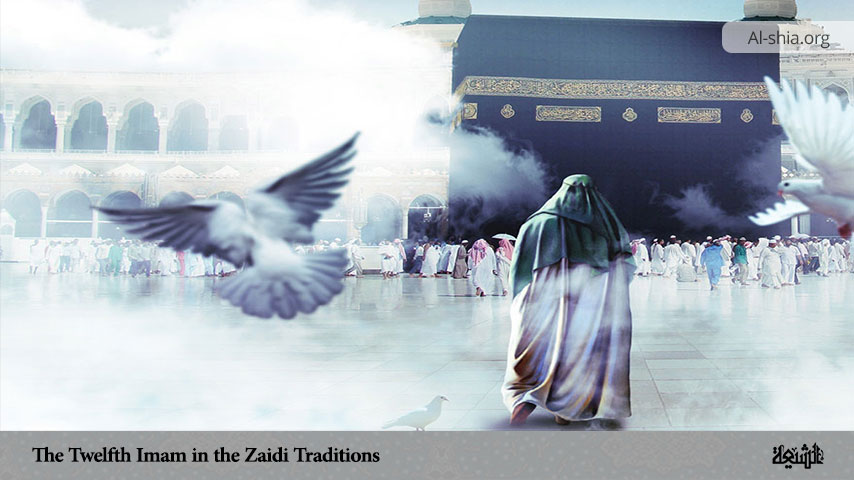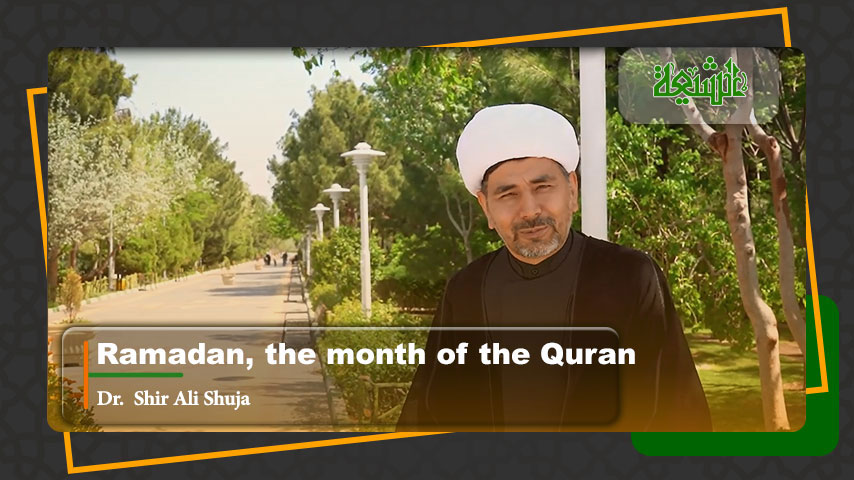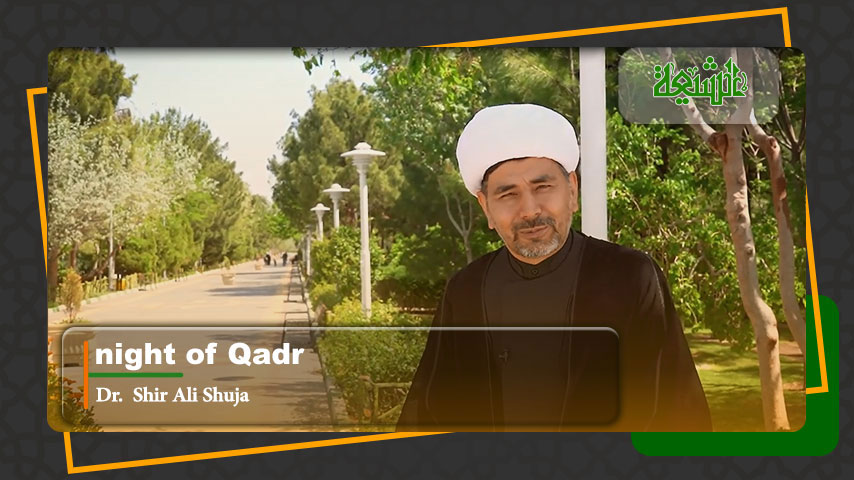The Zaidi sect, the Jarudiyyah, narrates many traditions attributed to the Prophet and al-Baqir concerning the political role of the Twelfth Imam. One of their distinguished scholars in Kufa was Abu Said `Abbad b. Ya’qub al-Rawajini al-`Asfari (d. 250/864).(1) He wrote a book entitled Kitab Akhbar al-Mahdi. (2) Al-Dhahabireports that `Abbad was a Rafidite propagandist, and was awaiting the rise of al-Mahdi in the near future. He used to carry a sword, and once said that he kept his sword ready in order to fight for al-Mahdi. (3) It is worth mentioning that `Abbad held this view before the occultation of the Twelfth Imam in 260/874 since he died in 250/864. (4) He reports three Prophetic traditions concerning the Twelfth Imam. Below are two of them:
1)The Prophet is believed to have said, “From my descendants there will be eleven leaders [who will be] noble, receivers of tradition [and] possessed of knowledge, the last of whom will be `al-Qaim bil-Haqq’ who will fill it [i.e. the world] with justice, just as it was filled with tyranny. (5)
2)The Prophet is reported to have said: “I and eleven of my descendants and you, O ‘Ali, are the axis of the earth, that is, its tent pegs and its mountains. By us, Allah has secured the world so that it will not sink with its people. For when the eleventh of my descendants have died the world shall sink with its people without warning. (6)
These traditions along with other sayings predicting the historical circumstances and the signs which would precede the rise of al-Qaim al-Mahdi were used by the Shia in their struggle for power. This can be seen in the events of the general `Alid uprising which occurred in 250-1/864-5 when many Shiites applied the Prophetic traditions concerning the signs of the rise of al-Qaim al-Mahdi to the historical circumstances surrounding this revolt. Ibn `Uqda (d. 333/944) reports that Imam al-Sadiq said: The People of the House of the Prophet will rise in arms in Mecca holding a white standard in his hand: The Euphrates will become dry, and, at the same time, a group of people, whose eyes are small, will advance towards you from the East and will force you to leave your houses.
Moreover, the graves of your death will be opened and predatory animals will attack your houses. Afterwards, a fair-complexioned man will install a chair in Mecca calling people to curse `Ali b. Abi Talib, and killing many people, but he will be killed on the same day. (7)
According to `Ali b. al-Husayn b. al-Qasim al-Kharraz (d. ca. 250/864) all these signs occurred during the revolt of Yahya b. `Umar in 250/864. As a result, some Shiites, particularly the Jarudiyya, believed that the leader of this revolt, Yahya b. `Umar was himself al-Qaimal-Mahdi. (8)
The Twelfth Imam in the Imamite traditions
The Imamite traditionists are distinguished from the Sunnites and the Zaidis by their claim that the Twelfth Imam mentioned in the Sunnite and the Zaidi traditions is in fact Muhammad the son of the eleventh Imam al- `Askari, and that he is al-Qaim al-Mahdi. Moreover, they have written in more detail about his occultation, his political role, the signs which would precede his reappearance and the social and political conditions which might pave the way for it.
The traditions concerning the Twelfth Imam
The Prophetic traditions concerning the twelve Imams related by the Sunnite and the Zaidi traditionists were also narrated by the Imamites. (9) They applied these traditions to their twelve Imams and added traditions of the Imams themselves which indicates explicitly that the successor of the eleventh Imam was al-Qaim. The traditions attributed to the Prophet do not indicate explicitly that al-Qaim would be the successor of al-`Askari, the eleventh Imam, whereas the sayings of the Imams do.
The earliest reference to a Prophetic tradition concerning the Twelfth Imam is recorded by the Imamite traditionists on the authority of Sulaym b. Qays al-Hilali. He was a companion of five Imams, ‘Ali, al-Hasan, al-Husayn, `Ali b. al-Husayn and al-Baqir, and died in 90/701.(10) The Imamites regard his work as the first Shiite collection of Hadith. (11) He reports numerous narrations concerning the twelve Imams and the political role of the last Imam. The first of these narrations is attributed to a Christian monk who met `Ali after his return from the battle of Siffin. He informed him that he had found in the Gospels that the successors of the Prophet Muhammad would be twelve; the last of them would fill the world with justice, and Jesus would perform the prayer behind him. (12)
All the other narrations in Sulaym’s work are attributed to the Prophet. The most important of these is quoted on the authority of the companions `Ali, `Abd Allah b. Jafar al-Tayyar, Salman al-Farisi, Abu al-Haytham b. al-Tayhan, Khuzayma b. Thabit, `Ammar b. Yasir, Abu Dharr, al-Miqdad and Abu Ayyub. They narrated that the Prophet gathered his companions together at Ghadir Khumm and said to them:
O people, the legal power (al-wilaya) is granted only to `Ali b. Abi Talib and the trustees from my progeny, the descendants of my brother Ali. He will be the first, and his two sons, al-Hasan and al-Husayn, will succeed him consecutively. They will not separate themselves from the Qur’an until they return to Allah.(13)
Sulaym adds that the Commander of the Faithful, ˜Ali, told him, “O brother, son of Hilal, the Mahdi of my nation is Muhammad, who shall fill the earth with justice and equity as it was filled with tyranny and injustice. I know who will pay the oath of allegiance to him.”(14) Sulaymstates that he met al-Hasan and al-Husayn in Medina after the assassination of their father, ‘Ali, and related to them this tradition on ‘Ali’s authority. They confirmed that they had also heard it from the Prophet. Sulaym adds that he informed `Ali b. al-Husayn, the fourth Imam, in the presence of his son al-Baqir about this tradition, and they also confirmed its authenticity.
Moreover Abban b. Abi `Ayyash reports that he met al-Baqir during the rite of pilgrimage and mentioned Sulaym’s tradition to him and that he confirmed its authenticity. (15) Butal-Mas`udi doubts the authenticity of this tradition claiming that this tradition was transmitted only through Sulaym.(16) Despite the fact that this tradition is related to the authority of Sulaym b. Qays by many Imamite scholars, such as al-Kulayni, al-Nu`mani, and al-Tusi,(17) it was related and confirmed by others as well.(18)
In addition, al-Saduq relates the above tradition to the authority of `A1i,(19) and he narrates another prophetic tradition on the authority of Abd Allah b. `Abbas: I am the master of the Prophets and ‘Ali the master of my trustees, of whom there will be twelve; the first one is `Ali, and the last is al-Qaim.(20)
Moreover, the Imamite scholars relate numerous traditions attributed to their Imams, which confirm that the Twelfth Imam will be al-Qaim al-Mahdi. (21) It is worth noting that al-Hadrami (fl. 3rd/9th century) reports a tradition which gives the Imam who will rise in arms the epithet al-Qaim. (22) At the same time, other narrations employ the epithet al-Mahdi, particularly in the works of al-Saffar (d. 290/902). (23)
The use of these two terms caused much confusion amongst the followers of al-Jawad that some were not sure whether al-Qaim and al-Mahdi were the same individuals or not. Therefore, according to al Saduq, al-Jawad was reported as having said that al-Qaim is from “us” and that he would be al-Mahdi; he must be awaited by his followers during his occultation and obeyed at his rising and that he would be his descendant in the third generation. (24)
The Imamites of the fourth/ninth century were called the Twelfth Imam al-Qaim al-Mahdi. Al-Mufid states that he was called al-Mahdi because he would guide people to a forgotten dogma and law. (25)
NOTES:
________________________________________________
1. For the biography of `Abbad and his Shiite sympathies see Ibn Hibban, al Majruhin, 2, 172; Mizan, 2 379-80, 4, 149; al-Najashi, 225.
2. al-Hilli, al-Idah, 176; al-Galbaygani, op. cit., 5
3. Mizan, 4, 379-80
4. Ibn Hibban, al-Majruhin, 2, 172.
5. al-`Asfari, Asl Abu Said al-`Asfari, Ms. f. 1-2.
6. al-`Asfari, Asl Abu Said al-`Asfari, f. 2. Al-Kulayni includes these traditions in his work al-Hujja but, according to his transmission, the Prophet mentioned twelve Imams from his descendants and not eleven. Thus the number of the Imams along with `Ali would-be thirteen. Because al-Kulayni transmitted his narration on the authority of al-`Asfari, it appears that the latter’s version is more accurate. al-Kafi, 1, 533-4.
7. Ibn `Uqda, Kitab al-Malahim, f. 74-5.
8. EI1,art. “al-Mahdi”, 112.
9. N.al-Ghayba, 7,48,57-61, 31, 45; al-Saduq, Khisal, 436-45; `Uyun, 323, al Karajaki, al-Istibsar, Ms. f. 11-12; al-Kafi, 1, 534; al-Tabsi al-Shi’a wa-l-Raja (Najaf, 1966), 129-30; Kamal, 279.
10. al-Barqi, Kitab al-Rijal, 4,7,8,9.
11. Ibn al-Nadim, al-Fihrist, 1, 535; N. al-Ghayba, 47.
12. al-Hilali, Kitab Sulayman b. Qays, 135-7.
13. Ibid.,109-10, 124-5, 165-6, 201, 204-6.
14. al-Hilali, op. cit. 94; Kamal, 285.
15. al-Hilali,op. cit. 95.
16. al-Mas`udi, al-Tanbih, 198.
17. al-Kafi,I, 529; N. al-Ghayba, 38; 46, 274-8; T. al-Ghayba, 99.
18. al-Tirmidhi, 4, 505-6; al-Darimi, Sunan, 4, 151.
19. Kamal Al-Din, 259-61.
20. Kamal Al-Din, 280. Another narration has been narrated by the companion Jabir al Ansari, which confirms that al-Mahdi would be from the progeny of `Ali b. al Husayn (al-Tusi, al-Amali 2, 251), but al-Sahib b. `Abbad doubts its authenticity; Nusrat, Madhahib al-Zaydiyya, 208-9.
21. al-Kafi, 1, 531-3; al-Irshad, 393; Dala’il, 236-8, 249-51.
22. al-Hadrami, Asl Jafar b. Muhammad b. Shurayh, Ms. f. 32b; for other similar traditions see al-Kafi, 8, 167, 536; Ibn Tawus, al-Igbal, 431.
23. al-Saffar, Basa’ir al-Darajat, f. 19b, 49b; for similar traditions see al-Kafi, 1, 243, 281, 338, 372, 411, 496, 536.
24. Kamal, 377. Al-Tusi reports another narration attributed to the tenth Imam who stated explicitly that the Twelfth Imam would be al-Mahdi (T al-Ghabya, 92). However, it might be that such narrations were not common among the Imamites. When the traditionist al-Fadl b. Shadhan (d. 260/874), talks about the role of al-Qaim al-Mahdi, but he does not attach this epithet to the Twelfth Imam; Ibn Shadhan, al-Idah, 475-6
25. al-Irshad,411; see also al-San`ani, al-Musannaf, 11, 472.
















